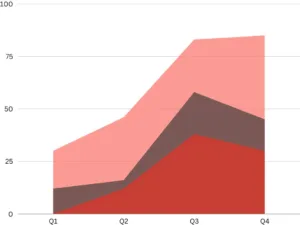Worldwide PC shipments fell by 30% in Q1 2023 compared to the same period in 2022, due to oversupply and low demand caused by economic uncertainties. The decline marks the second consecutive quarter of historic year-over-year drops. Despite vendors reducing average selling prices (ASPs) to clear inventory, the ASPs of new PCs increased due to inflation-driven supply chain cost increases. The top vendors remained unchanged, with Lenovo maintaining its No. 1 position with 23.3% market share in shipments. Vendors are expected to increase ASPs moderately in 2023 to offset rising costs.
| Company | 1Q23 Shipments | 1Q23 Market Share (%) | 1Q22 Shipments | 1Q22 Market Share (%) | 1Q23-1Q22 Growth (%) |
| Lenovo | 12,828 | 23.3 | 18,375 | 23.3 | -30.2 |
| HP Inc. | 12,019 | 21.8 | 15,866 | 20.1 | -24.2 |
| Dell | 9,541 | 17.3 | 13,804 | 17.5 | -30.9 |
| Apple | 4,819 | 8.7 | 7,324 | 9.3 | -34.2 |
| ASUS | 3,910 | 7.1 | 5,584 | 7.1 | -30.0 |
| Acer | 3,523 | 6.4 | 5,531 | 7.0 | -36.3 |
| Others | 8,514 | 15.4 | 12,268 | 15.6 | -30.6 |
| Total | 55,154 | 100.0 | 78,752 | 100.0 | -30.0 |
Lenovo, HP, and Dell all experienced steep declines in PC shipments in the first quarter of 2023. Lenovo recorded the steepest annual decline in its corporate history, while HP saw its seventh consecutive quarter of double-digit shipment decline. Dell had its fourth consecutive quarter of year-over-year decline, largely driven by weak business PC demand. Despite the US economic outlook being better than anticipated, the US PC market still declined by 25.8% in Q1 2023, with Dell and HP taking the top two spots in terms of market share. The small and midsize business market was especially weak due to economic uncertainties, with PCs being the first area to face budget cuts. In contrast, spending in other technology segments, such as software and IT services, is expected to grow in 2023.
| Company | 1Q23 Shipments | 1Q23 Market Share (%) | 1Q22 Shipments | 1Q22 Market Share (%) | 1Q23-1Q22 Growth (%) |
| Dell | 3,833 | 26.4 | 5,171 | 26.4 | -25.9 |
| HP Inc. | 3,738 | 25.7 | 4,317 | 22.0 | -13.4 |
| Lenovo | 2,137 | 14.7 | 3,316 | 16.9 | -35.6 |
| Apple | 2,069 | 14.2 | 3,110 | 15.9 | -33.5 |
| Acer | 787 | 5.4 | 1,104 | 5.6 | -28.7 |
| ASUS | 613 | 4.2 | 778 | 4.0 | -21.2 |
| Others | 1,369 | 9.4 | 1,796 | 9.2 | -23.8 |
| Total | 14,547 | 100.0 | 19,593 | 100.0 | -25.8 |
The EMEA PC market experienced a significant decline of 35.9% compared to a year ago, with shipment volumes falling below the total U.S. shipment volume. The top six vendors all lost more than a third of their shipment volumes year-over-year, due to the impact of political unrest, inflationary pressures, interest rate increases, and a pending recession. The Asia Pacific PC market also saw a significant decline, with China being the hardest hit due to high inventory and weak demand. However, countries like India and Vietnam fared slightly better due to enterprises diversifying their production sources away from China. The Japanese market experienced a moderate decline of 9.8% compared to other regions. These results are preliminary, and final statistics will soon be available to clients of Gartner’s PC Quarterly Statistics Worldwide by Region program, which provides a comprehensive and timely picture of the global PC market.

